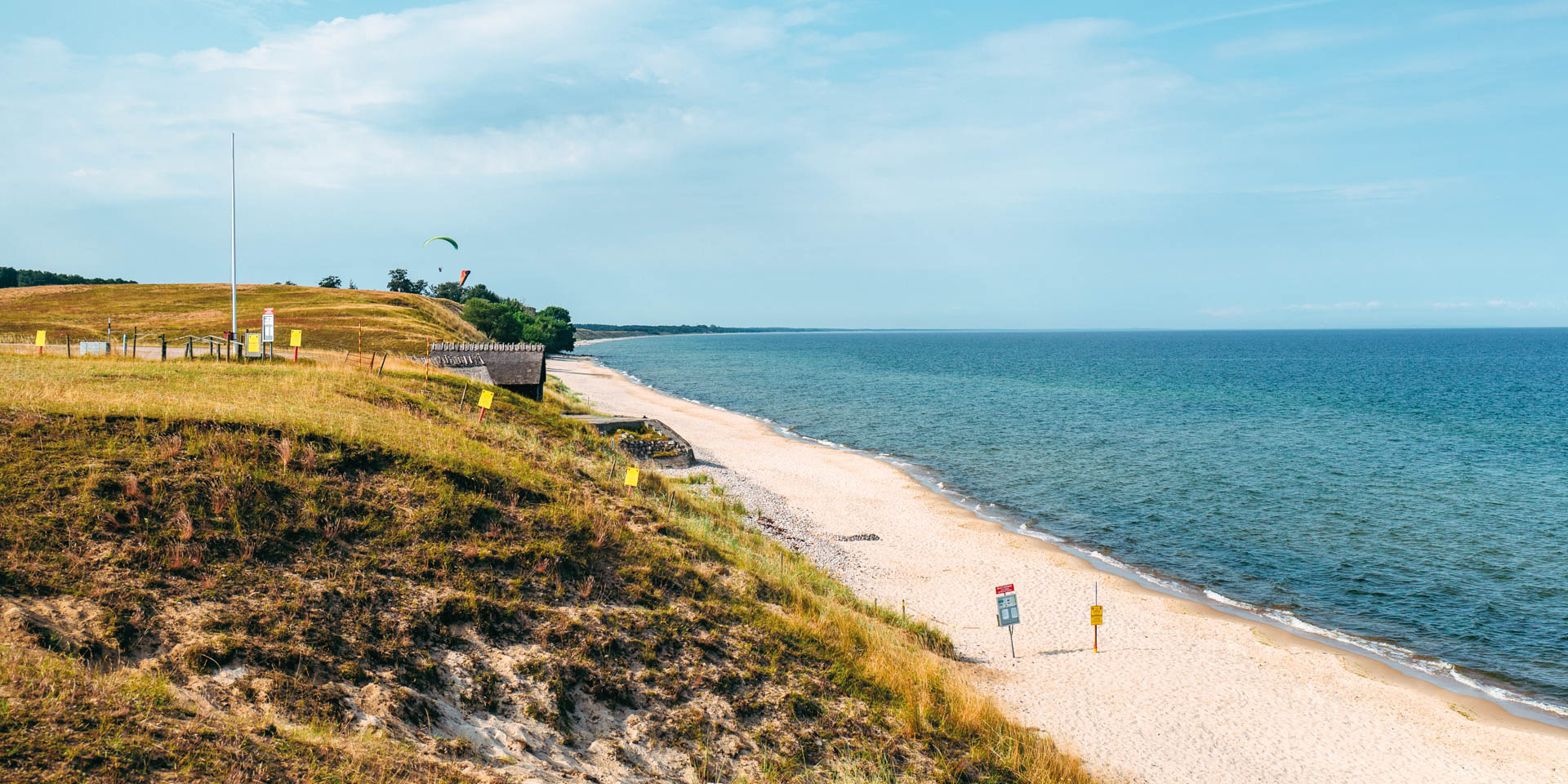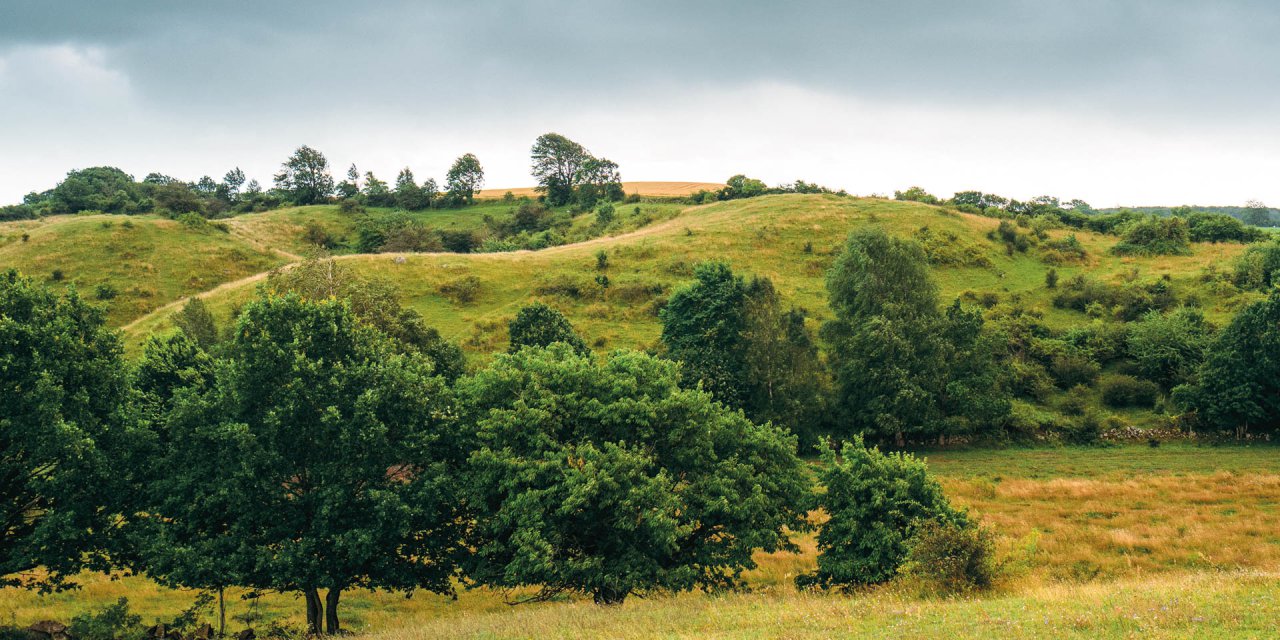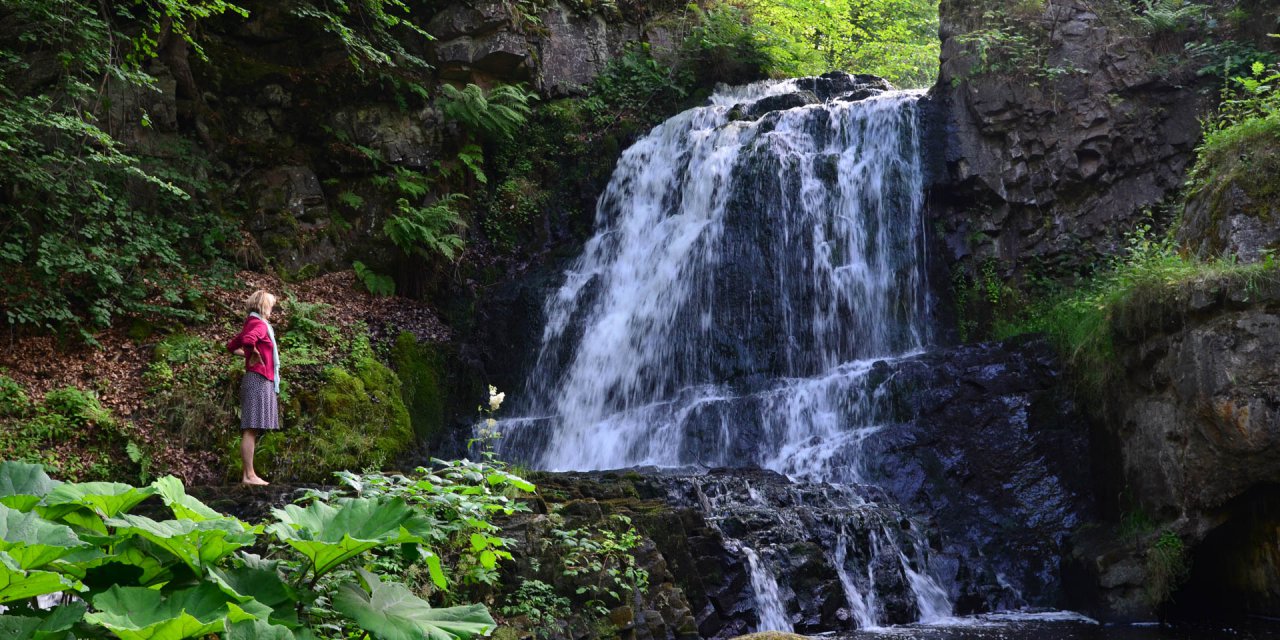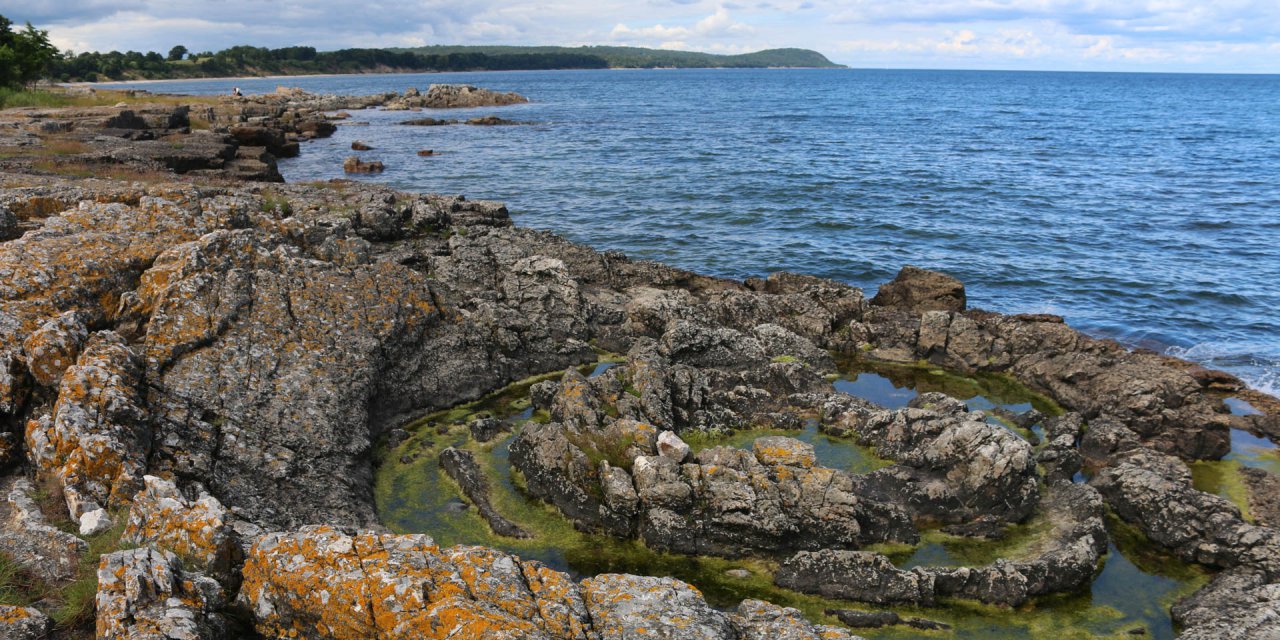

Haväng & Vitemölla Strandbackars Naturreservat
Exceptional nature reserve near Vitemölla
The nature reserve Haväng & Vitemölla Strandbackars Naturereservat near Vitemölla at the northern end of the municipality of Simrishamn represents one of the largest real sand steppe in Sweden.
In Haväng & Vitemölla Strandbackars Naturereservat you will also find the gentle hills that are so characteristic of the lovely landscape of Österlen in the east of the southern Swedish province of Skåne. In contrast to the dunes at the coast, which usually consist of drifting sand, Haväng & Vitemölla Strandbackar are calcareous sand deposits of an ice-age glacier.
The calcareous sandy soil as well as the dry and warm climate of the 260 hectare nature reserve are characteristic for a sand steppe, comparable to the Hungarian Puszta, but is otherwise very rare in Sweden. Accordingly, the sand steppe has a very special flora, which is not found in this composition in other places.
Flora & Fauna in Haväng & Vitemölla Strandbackar
The open sand heath is home to the branched St Bernard's-lily (Anthericum ramosum), sand pink (Dianthus arenarius) and the rare blue hair grass (Koeleria glauca). Along with the blue cushions of the Breckland thyme (Thymus serpyllum) and the rows of yellow-flowering stonecrops (Sedum) and dwarf everlast (Helichrysum arenarium), they form the habitat for numerous sand-loving insects.
Among them are rare species such as the antlion (Myrmeleontidae), whose predatory larva digs funnels in the sandy ground to catch its prey. The short-stalked sand wasp (Podalonia luffii), which is threatened in Sweden, also lives here and digs its individual nests in the sand. And then there is the rare and somewhat unusual-looking horned dung beetle (Copris lunaris), which feeds on the dung of cattle grazing on the grasslands between the sand fields.
In summer, numerous butterflies such as the niobe fritillary (Fabriciana niobe) fly over the flowers of the dry steppe landscape. The insect richness of the sand steppe is also an important breeding ground for several species of songbirds, including several species of the highly endangered tawny pipit (Anthus campestris).
Brooks and gorges in the nature reserve
All in all, the nature reserve along the coast between the old fishing village Vitemölla and the mouth of the river Verkeån consists of a mosaic of different landscapes. There is the almost three-kilometre-long Vitemölla Strand, which is not only ideal for swimming, but also for long walks along the beach. The beach is interrupted by the Klammersbäcken stream and Verkeån, both of which permanently change the shape of their estuaries due to the sandy subsoil.
The two watercourses form a great contrast to the rest of the nature reserve with their own flora and fauna similar to oases in a desert. They are framed on both sides by a wide strip of dense deciduous forest of various precious woods and alders, where the croaking of tree frogs can be heard and kingfishers shoot into the water like colourful arrows.
The Klammersbäcke, which flows through the middle of the nature reserve, has in the course of time even cut so deeply into the terrain that it has formed a narrow gorge. And if you follow the course of the Verkeån River upstream towards the northern border of the nature reserve, you will quickly reach the adjacent, almost 1,500 hectare nature reserve Verkeån with miles of circular trails.
Discover Haväng & Vitemölla Strandbackar
There are no marked trails in the Haväng & Vitemölla Strandbackars Naturreservat, but there are numerous, easily accessible paths that lead to every corner of the steppe landscape. Since the open landscape is quite clear and the beach line is almost always in sight, orientation is not difficult despite the lack of path markings.
Shortly before the northern border of the nature reserve you will find the small open-air museum Lindgrens Länga, which provides some interesting information about the steppe landscape and its ancient cultural history. The fact that the area was already settled in the Stone Age is proven by the 5,500 year old remains of the large stone chamber grave Havängsdösen on the beach north of Verkeån.
In the Iron Age, until about 1,000 A.D., there was a flourishing settlement called Maletofta, of which for a long time only regional legends told, but whose existence was finally proven by archaeological research. And right at the mouth of the Verkeån River there was a harbour until the 17th century, from which you can still see the rows of piles and erected stones that once served as breakwaters.



